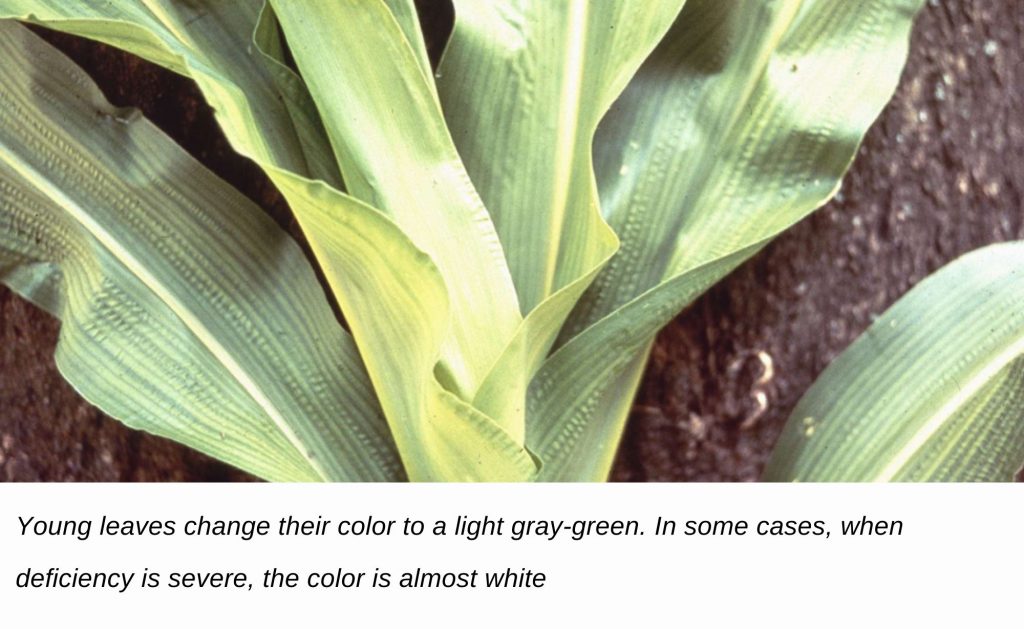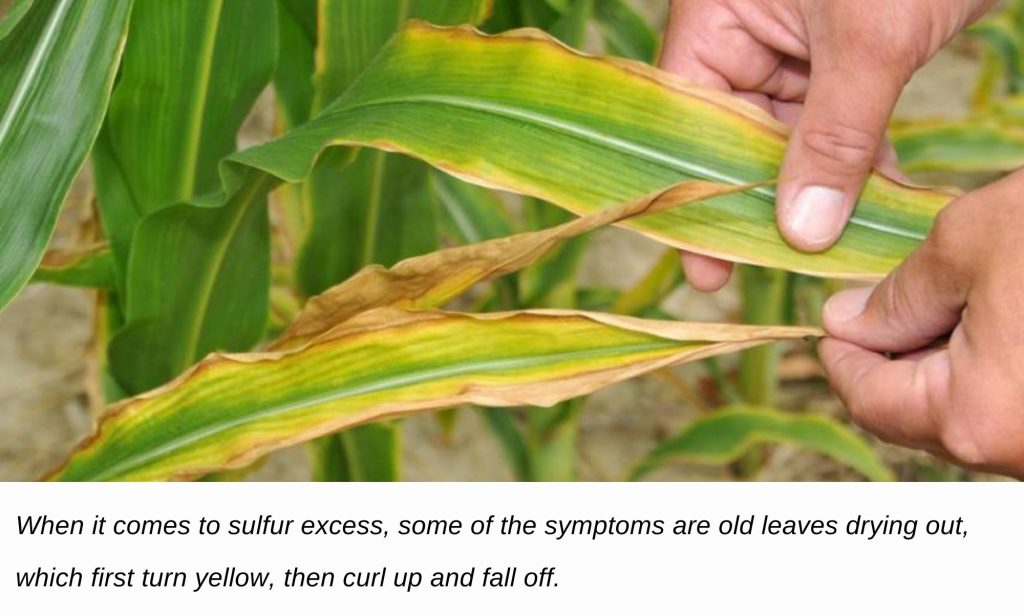Sulfur is one of the most important macronutrients in plant life. It’s a constituent of many substances that affect the fertility and vitality of crops. Sulfur is found in essential amino acids, such as cystine and methionine, and in various compounds that are necessary for the synthesis of fats. The element is also involved in the process of respiration and carbon and nitrogen metabolism.
In plants, sulfur is in the form of organic and mineral compounds (0.2-1% of the dry weight of the crop). This is a very small amount compared to the content of nitrogen or phosphorus, but it cannot be replaced by anything.

Each field and garden crop contains a different amount of this macronutrient in its body, so the need for it is different. The greatest amount of the macronutrient is in the leaves and seeds, less in the stems and root system.
Sulfur in nature
In organic form (humus, plant residues), the element accounts for 80-90% of the reserves, but it is practically inaccessible to crops. In nature, there’s a whole complex of microorganisms that carry out processes of mineralization of organic sulfur-containing substances to sulfates (sulfate of potassium, magnesium, calcium, sodium). This process depends on many factors and proceeds quite slowly, so agricultural crops, characterized by intense growth, most often experience sulfur starvation.
Plants absorb this element in two ways: sulfur dioxide (SO2) is absorbed from the atmosphere through the leaves, and sulfate ions are actively absorbed through the roots. Sulfate ions absorbed by the roots move through the plant with the transpiration current and then accumulate in the vacuoles of plant cells or participate in a number of biochemical reactions.

For example, most sulfate sulfur is part of cysteine in leaf chloroplasts. Cysteine is the primary compound from which most of the other sulfur-containing organic compounds are subsequently formed in plants. Other important sulfur-containing amino acids are cystine (two cysteine molecules joined together) and methionine. In smaller amounts, sulfur is part of such important organic compounds as coenzyme A, biotin, thiamine, glutathione, and sulfolipids.
The role of sulfur in plants
The main source of the element in the soil is organic compounds. In this case, sulfur must initially be water-soluble, that is, oxidized to the sulfate form. After that, it becomes available for use by plants. Sulfur plays a few important roles in plants:
- It’s a part of plant proteins;
- Participates in the formation of enzymes and oils;
- Takes part in the metabolic processes;
- Takes a direct part in and activates photosynthesis, as well as plant growth and development;
- It’s very important for the redox potential of the cell;
- It’s responsible for the plant’s resistance to negative environmental influences and allows activating regenerative processes.
Most sulfur-containing fertilizers are derived from the artificial purification of oil and gas. The natural process of mineralization of soil organic matter and release of sulfur is usually too slow to meet the needs of crops for this element. The element deficiency can be eliminated by the application of mineral or organic fertilizers, which contain sulfur. The removal of the element from crops, in the absence of the necessary compensation, can lead to a complete depletion of the element in the soil.
Symptoms of sulfur deficiency in plants
The effective impact of fertilizers on yields allows concluding that their application is quite reasonable and justified. Acute sulfur deficiency is observed in the following cases:
- Poor soil drainage results in a lack of oxygen for transformative processes that make sulfur available to plants;
- Sulfur is susceptible to leaching, especially on sandy soils;
- The minimum content of organic matter in the soil, which is the main natural source of the element;
- The lower temperatures that don’t let the soil warm up properly, slow down the transformation of sulfur into available forms.
The importance of the element for crops is enormous. The timely application of micro-fertilizers containing sulfur will provide complete nutrition and, as a result, good yields. Symptoms of sulfur deficiency are very similar to those of nitrogen shortage:
- Young leaves change their color to a light gray-green. In some cases, when deficiency is severe, the color is almost white;
- Negative changes in the growth points. Plants stop growing and developing;
- Problems with flowering and seed formation;
- Plants are intolerant to freezing temperatures and droughts;
- The stems are short, very fragile, and thin.
- The roots of the plant turn white and the tips may die off.
When it comes to sulfur excess, some of the symptoms are old leaves drying out, which first turn yellow, then curl up and fall off.
Factors that affect the absorption of sulfur:
- High doses of nitrogen and phosphorus fertilizers in the soil;
- High selenium content in the soil;
- Reduced air and soil temperature;
- Leached or light soils with little organic matter.
In case of lack of sulfur, actions must be taken as fast as possible, within 4-5 days. The best way to do this is by foliar feeding. Modern fertilizers don’t contain harmful impurities, are easily soluble in water, and quickly saturate crops.
Conclusion
Sulfur fertilizers are very important for the proper growth and development of plants. It’s extremely important to apply sulfur in a timely, regular, and properly dosed manner. The element is very important at the very beginning of plant growth and development and during the flowering period. Sulfur does not have a significant effect on the yield increase, but it has a great influence on the quality of the products.


